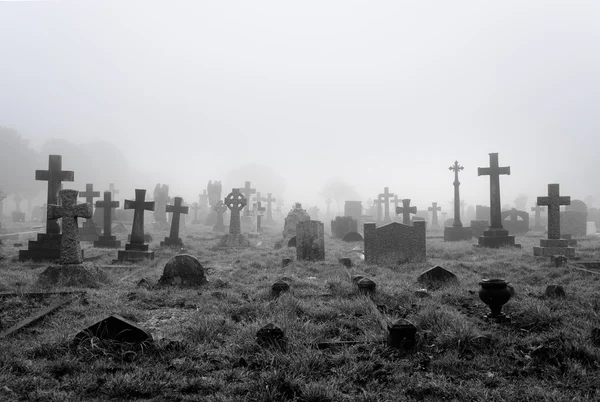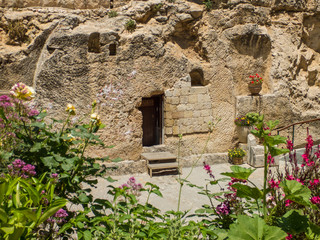DEFINITIONS
Universalism believes in the ultimate well-being of every person on earth. It has a pagan and Christian form. The latter teaches that in Jesus Christ, God’s elect-one for our sakes, all humanity is elect – however, that doesn’t mean that all will ultimately accept his free gift of forgiveness. More often than not, we’ve chosen to live in a self-enclosed ‘world’ of our own making, suspicious of the source of all love, goodness and truth. As C.S. Lewis wrote in his ‘The Great Divorce,’ ‘I willingly believe that the damned are, in one sense, successful rebels to the end; that the doors of hell are locked on the inside.’ For God to over-ride peoples’ wills and hearts, he would have to ‘un-create’ their humanity.
- Reality is that many Christians in recent times have abandoned the institutional Church for their survival (I did 14 years ago) – some are resorting, I believe in an over-reactionary way, to all manner of teachers and writings, many healthy, some not so healthy. Top of the pops at the moment is best-selling American Franciscan priest Richard Rohr. In his latest book, ‘The Universal Christ,’ we are introduced to the ‘gospel’ of ‘panentheism.’ The latter could include much of North and South American native religions; elements of Hasidic Judaism and Kabbalah teaching; Islamic Sufi orders; some re-incarnationalists; some eastern forms of Christianity, etc. ‘Panentheism’ maintains that all will ultimately be ‘saved,’ through the incarnational and indwelling ‘cosmic Christ.’ Like many, I’m grateful for Rohr’s call to a more contemplative and cosmic Christianity – but not at the expense of Scripture. Rohr and his predecessors refer much to passages such as Ephesians 1-3 and Colossians 1. On closer examination, we find that both refer to the reconciliation of all those in faith-union with Christ (cf. also 2 Cor. 5:11-6:2). [For a fair, scholarly, 7-page critique of Rohr’s book ‘The Universal Christ,’ see British theologian Ian Paul’s Psephizo article,“Is Richard Rohr’s ‘Universal Christ’ Christian?”]

- Please hear me out. I choose to distance myself from Western fundamentalists’ hyper-literal ‘turn or burn’ Bible-punching which seems to delight in the eternal roasting of the lost: try and read the Bible and Jesus without grasping the place of metaphor! Many, including myself, see God’s ultimate judgment as a place of self-imposed isolation and bitterness, ‘a place of total inability to laugh’ (Fyodor Dostoevsky, 1821-1881). As Christians our ‘ministry of reconciliation’ is not one of wholesale condemnation but rather loving declaration, by word and attitude and deed, of Christ’s Good News of forgiveness offered to all. [Tim Keller reminds those who so easily demean Christians as ‘exclusivist’ that ultimately all people are exclusivist by nature]
- We must distinguish between absolute universalism and relative universalism. According to the latter, the universality of Christ’s sacrifice is seen in his death for all humankind – it remains, however for all people to accept his free gift of reconciliation accomplished via the Cross.
- There is clear evidence that many postmodern Christians, whether they recognize it or not, are distant children of existentialism, which laid huge emphasis on personal experience of reality alone. Here we may reference German existentialist theologian Friedrich Schleiermacher (1786-1834), who questioned any access to ‘absolute truth.’ We could also include French paleontologist and Jesuit priest Pierre Teilhard de Chardin (1881-1955) – see his intriguing ‘Le Milieu Divin’ (‘An Essay on the Interior Life’), who in turn strongly influenced Richard Rohr. All these would ask how the Church today can preach reconciliation and at the same time maintain solidarity with modern/postmodern humanity? Certainly it would be condescending of us to cheaply dismiss their stance as mere rebellion and a denial of guilt. Nonetheless, the idea persists that human feelings alone cannot be determinative for making conclusions about life and the future – there must be a firmer foundation, a life-time norm (Augustine, 354-430 AD). Universalism appeals to the irresistible love and power of God, which are sufficient to overcome all obstacles in final matters. We agree, but respond that such love and power can never be kinder than the love of Christ as reflected in Holy Scripture.
FOUNDATIONS
- When Scripture deals with the seriousness of ‘sin’ (i.e. ugly ego, idolatry, etc), it reflects the brokenness and lostness of humankind in contrast to the totally surprising and unexpected grace of God: ‘For the Son of Man came to seek and save those who are lost’ (Lk. 19:10/Jesus to Zacchaeus). Surely if there’s hope for one, there’s hope for all.
- God’s love doesn’t pertain to some. John the Baptizer points to Jesus and shouts ‘Look! The Lamb of God who takes away the sin of the world!’ (Jn. 1:29) The apostle Paul reminds the Corinthian congregation: ‘For God was in Christ, reconciling the world to himself…’ (2 Cor. 5:19). He tells his apprentice, Timothy, that God ‘wants everyone to be saved and to understand the truth’ (1 Tim. 2:4).
- Eph. 1:10 and Col. 1:20 have often been quoted in defense of universal reconciliation. Indeed, in both passages Paul speaks of a magnificent reconciliation of ‘all things’ in Christ. ‘For God in all his fullness was pleased to live in Christ, and through him God reconciled everything (‘ta panta’ = ‘all things’) to himself. He made peace with everything in heaven and on earth by means of Christ’s blood on the cross’ (Col. 1:19-20). While there is a universal perspective here, it’s inseparable from the message of ‘salvation’ in Christ calling on all to believe and accept him (Jn. 1:12).
- Panentheists often use the term ‘apocatastasis’ (‘restoration’) to justify their views. In the Bible, significantly, the word occurs only once, i.e. in Acts 3:21. In this verse the apostle Peter is addressing the Jews who had crucified Jesus – he goes on to call them all to a radical ‘change of mind:’ ‘Now repent of your sins and turn to God, so that your sins may be wiped away. Then times of refreshment will come from the Lord, and he will again send you Jesus, your appointed Messiah. For he must remain in heaven until the time for the final restoration of all things, as God promised long ago through his holy prophets’ (v. 19-21). The text references the prophet Elijah, who proclaimed Yahweh’s restoration of all things via repentance: cf. Mal. 4:5-6; Mt. 17:11-13; Mk. 9:12-13. Understandably, the proponents of apocatastasis steer clear of Acts 3:21! Absolute universalists, at the end of the day, cannot forever ignore the fact that Scripture deals with the future only in the context of the Cross and our response to it. Brilliant Swiss scholar, Hans Urs von Balthazar (1905-1985), though standing in solidarity with the frailty and suffering of humankind, pleads for an eschatology that takes into account, at all points, the tension of faith, God’s call and human responsibility. Many people have argued that Karl Barth (arguably the greatest theologian of the 20th century) was a universalist. However, he rejected that label on a number of occasions: “The Church will not then preach an ‘apocatastasis’, nor will it preach a powerless grace of Jesus Christ or a wickedness of men which is too powerful for it.” What balance!
- The fact is that, whenever the New Testament speaks of God’s love, it often does so in the context of judgment. Compare the well-quoted Jn. 3:16 and the less-quoted v. 36, ‘Whoever believes in the Son has eternal life; whoever disobeys the Son will not see life, but must endure God’s wrath’ (NRSV). The gravity of this point is revealed on the emotional plane of Christ’s life when he uncovers Israel’s blindness to God’s compassion, ‘O Jerusalem, Jerusalem, the city that kills the prophets and stones God’s messengers! How often I have wanted to gather your children together as a hen protects her chicks beneath her wings, but you wouldn’t let me. And now look, your house is abandoned and desolate’ (Mt. 23:37-38). Paul’s testimony of God’s reconciling love is followed by the charge,“So we are Christ’s ambassadors; God is making his appeal through us. We speak for Christ when we plead, ‘Come back to God!'” (2 Cor. 5:20)
‘The doctrine of apocatastasis is a static, timeless, un-kerygmatic doctrine, a form of gnostic thought over against God and His love’ (G.C. Berkouwer). We conclude that the historical confessing Church has repeatedly, to a lesser or greater extent, implicitly or explicitly, repudiated the doctrine of an ultimate ‘apocatastasis,’ including Origen’s in the 200’s AD. The outrageous ‘Good News’ of God’s love in Christ continues to ring out to the ends of the earth, even in our time. The message goes out to everyone, indiscriminately, because God’s loving work in Christ is directed to the whole of humanity: Mt. 24:14; 28:10.
[See footnotes and look out for Part 2’s nature of the judgment]
FOOTNOTES
[1] Recently I pointed out to a Rohrian panentheist that if one is in trouble at sea, it helps to have a lighthouse to navigate to safety. He responded that his ‘lighthouse’ was within him. True, but unfortunately not the whole truth. I find that many today appear to be adrift on ‘a sea of subjectivism.’ People are looking for answers from within, via New Age philosophies, yoga, Western Buddhism, etc. I observed real Buddhism in Xiahe, the birthplace of the Dalai Lama. I chatted to young monks in training, saw them (and the aged) prostrate themselves hundred’s of time around the extended monastery walls and spin endless prayer wheels. I perceived in some an uncertainty about eternal things. Many passers-by watched curiously as our small group celebrated an open-air Communion at a closed monastery door.

[2] On the matter of ‘absolutes’ so maligned today, Francis Schaeffer (1912-1984) of L’Abri fame, noted ‘this curious mark of our own age: the only absolute allowed is the absolute insistence that there is no absolute!’
[3] I love the story of Martin Luther’s exasperation with his often over-introspective friend, Melanchthon. During one bad bout of Melancthonian rumination, Luther shouted at his friend ‘Melanchthon, the gospel is outside of you!’ Why is it so difficult for us to achieve a balance of objectivity and subjectivity? We do love to throw the baby out with the bath-water. God is a God of many antinomies.




